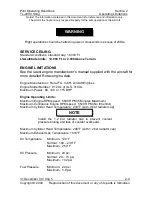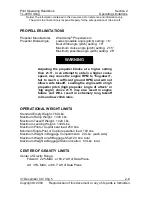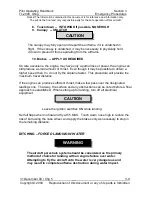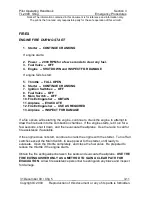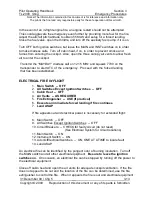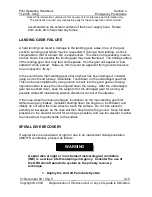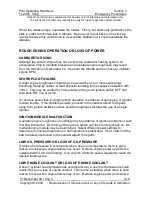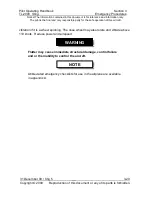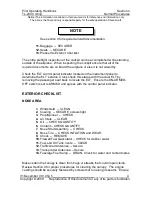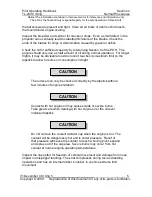
Pilot Operating Handbook
Section 3
TL-2000
Sting
Emergency Procedures
Notice! The information contained in this document is for reference and information only.
The pilot is the final and only responsible party for the safe operation of this aircraft.
31 December 09 / Chg 5
__
3-10
Copyright © 2009 Reproduction of this document or any of its parts is forbidden.
1.
Airspeed -- 55 KIAS
2.
Flaps -- FULL
3.
Radio -- SET TO 121.5; TRANSMIT “MAYDAY, MAYDAY,
MAYDAY!” and AIRCRAFT ID with CURRENT
POSITION
4.
Transponder -- SET TO 7700
5.
Baggage -- SECURE
6.
Harnesses -- TIGHTEN
7.
Power -- ESTABLISH MINIMUM DESCENT RATE AT MIN
SPEED
8.
Approach -- High winds - INTO WIND
Light winds - PARALLEL TO SWELLS
9.
Canopy -- UNLATCH
10. Touchdown -- NOSE HIGH WITH MINIMUM DESCENT
RATE, AVOID STALLING THE AIRCRAFT
ON WATER!
11. Airplane -- EVACUATE
12. Assume the aircraft will be inverted
In the event that a forced landing needs to be executed over water
and the parachute
system is not deployed
, follow the normal restart/shutdown procedures. Add Full
flaps and establish a steady slow (200fpm) descent rate at an airspeed of 55 KIAS.
This is done to allow for a slow airspeed with a slow descent rate prior to the water
surface impact.
Expect the aircraft to become inverted on contact.
If winds are high and white-cap waves are present, try to land in the direction of the
swells and as much into the wind as possible. If winds are calm, try to land parallel to
the swells and as much into the wind as possible. Unlatch the canopy when nearing
touchdown. This will help you to exit the airplane as quickly as possible before
possibly submerging.
Do
NOT
attempt to flare over smooth, calm water because height above the water’s
surface is optically very difficult to judge. Rather, touchdown nose high level with as
slow a descent rate as possible without entering a stall. As soon as the airplane
stops, evacuate the airplane.
For flight over-water with distances greater than gliding distance, all occupants
should wear an inflatable life vest. A US Coast Guard approved model that does
NOT inflate automatically should be used since an unintended inflation would hinder
aircraft evacuation.
CAUTION

